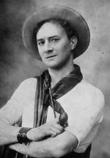Adapted by Roy Redgrave from Marie Corelli's famous Faustian novel of the same name, the plot follows the story of a penniless, starving author called Geoffrey Tempest who receives three letters. The first is from a friend in Australia who has made his fortune and offers to introduce him to a good friend who might be able to lift him from poverty. The second is a note from a solicitor detailing that he has inherited a fortune from a deceased relative, the third is a letter of introduction from a foreign aristocrat called Lucio, who befriends him and proceeds to be his guide in how to best use his new found wealth. Unaware that Lucio is the earthly incarnation of the Devil, despite warnings from a number of people, and that he is being tricked, Temple gains the wealth he desires but sees his life slide into misery. Eventually, when confronted with the true nature of his companion, he renounces evil and returns to society penniless but content with the chance to purify his soul.
As with Corelli's novel, this dramatisation focuses more on Lucio than on Tempest's fall from grace and redemption, thereby following the theme in which Satan yearns to achieve salvation - hence the 'man of sorrows.' According to the Argus' theatre critic, Redgrave's task in adapting the novel had been made difficult due to the "ugly, and often vulgar, realism of the authoress, which had it not been dealt with judiciously, would have become even more so in the concentrated glare of the stage." The critic went on to note that Redgrave had largely avoided these issues except for the last act, which sees the heroine, Lady Clare, "transgress all rules of artistic treatment in a way that makes one shudder at its naked grossness." Of the playwright's performance in the play the critic records:
Mr Redgrave, of course, plays Lucifer, and presents him in such a manner that he might easily pass for a gay, debonair man of the world, were it not for the concert of atmospheric disturbances and mocking laughs that follow him about... Mr Redgrave realised the part with remarkable discernment, emphasising always the human side of the character. Its drawback was the want of a satanic facet, yielding some glimpse now and then of the supernatural other than the jarring elements and discordant cries. There was not the suggestion of a limp about him; he even lit his cigar in the usual humdrum manner, and his sentiments would have done credit to any nonconformist. As a graceful piece of acting, Mr Redgrave was quite successful, but it was a long way from suggesting the devil and all his works. Maybe the adapter unconsciously wrote under the influence of the time, and has thereby brought our old friend more into harmony with the world and the flesh (9 October 1911, p15).

